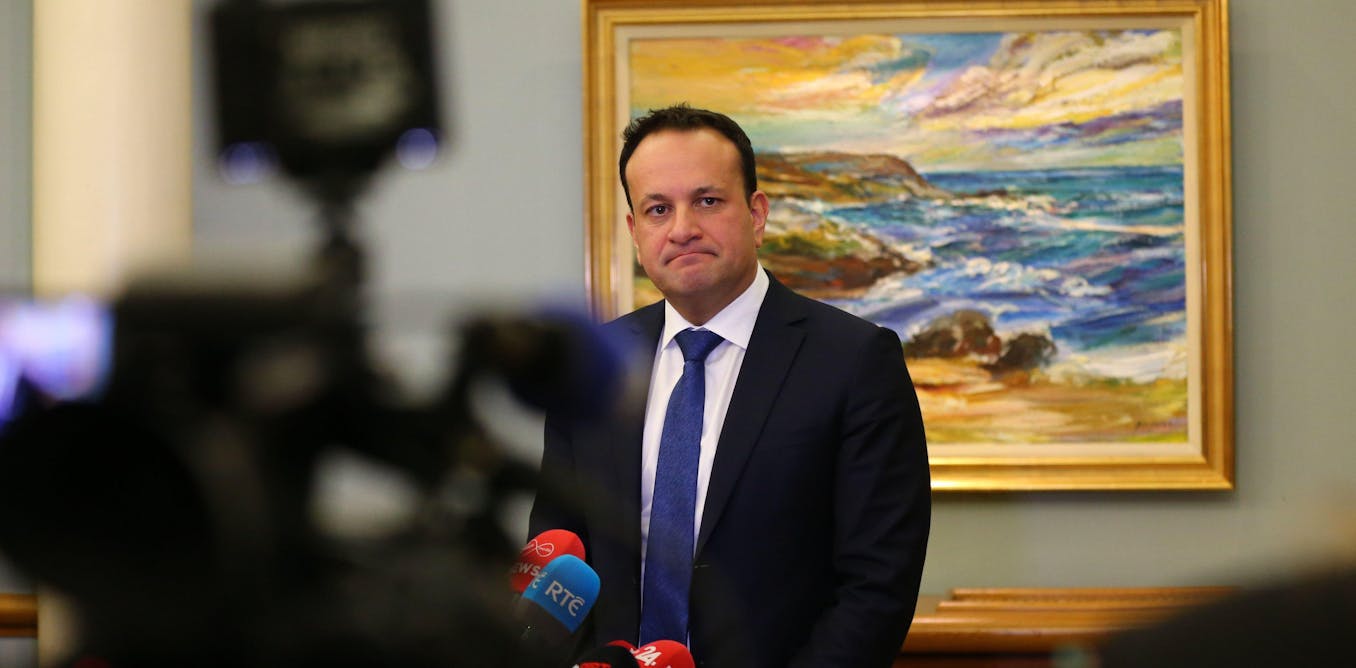Ireland, more than any other EU country, has a long and colourful history of referendums. Another chapter in that history has played out in the form of resounding defeats for two government proposals aimed at modernising the constitution.
One sought to remove a reference to a “woman’s” life “within the home” and recognise the value of “care” provided to others within the home. The other aimed to redefine the “family” as being based on “durable relationships” as well as marriage.
This enthusiasm for referendums – there have been 43 since 1937 – stems partly from an unusual quirk of the Irish constitution. Every amendment to the constitution, no matter how minor or obscure, requires a referendum, as well as an act of the Oireachtas (the national parliament). This is almost unique in Europe.
While a lot of these referendums have been about relatively technical matters, such as the court structure or the approval of new EU treaties, there has been a noticeable change in the way referendums are used in Ireland in recent years.
For a long time, referendums were, most typically, proposed by governments as a sort of means to an end. They were a way of permitting policies and acts which would otherwise have been unconstitutional, like making changes to the political system. Referendums were usually just a procedural requirement, imposed by the constitution, for making certain types of legal changes.
The ‘post-crash referendums’
In the years following the financial crisis of 2008 – which hit Ireland particularly badly – the approach to referendums noticeably changed. Amid a national crisis of confidence, following a crash of historic proportions, a degree of soul-searching was in evidence.
Themes of rebirth and renewal came to prominence within what was historically a conservative (and very stable) political system. There was much talk of a “new republic”, or at least of reforming a political system seen as parochial and clientelist, and as bearing much of the responsibility for the scale of the property crash.
This period also coincided with a spate of revelations about the state’s historical complicity with staggering abuse conducted in religious-run industrial schools, mother and baby homes, and the notorious Magdalene laundries. A series of high-profile disputes between the church and the state followed over the country’s reckoning with this legacy.
And so, in this light, a new style of referendum arguably emerged. Beginning in around 2012, referendums came to be used as part of a distinctive project of constitutional modernisation. There was an emphasis on removing or updating various parts of the constitution seen as archaic, oppressive or outdated.
This began with a referendum to enshrine children’s rights in 2012, followed by two very high-profile referendums to permit marriage equality and abortion in 2015 and 2018. In 2018 and 2019, referendums were used to liberalise divorce law and decriminalise blasphemy.
EPA
These referendums were not simply a means of legislating. They were also part of a deeply symbolic and expressive project. They were understood not just as a route to changing the law, but as a way of asserting a new national identity and values.
They became a way of making collective statements about “who we are”. They were also a way both of reckoning with dark aspects of the past and forging a new national “brand” for the future.
It is true, of course that some of these liberalising referendums, which removed controversial aspects of a Catholic-influenced constitution, related to materially significant issues of sometimes existential importance. The referendum repealing notorious abortion restrictions in the constitution was certainly that.
On the other hand, there was, running through these referendums, a noticeable narrative about national image – both Ireland’s self-image, and its image externally. These constitutional changes were a way of making a statement – of crafting a new national identity.
The Irish people were putting distance between themselves and a conservative past, and even making the country a beacon of liberalism and progress in a troubled world.
Some of these liberalising referendums were, indeed, purely symbolic. The children’s rights referendums enacted some grandiose-sounding language about the human rights of children, but made almost no material difference to the lives of children in practice. The blasphemy referendum removed an arcane criminal offence which some regarded as having been effectively impossible to prosecute anyway.
End of an era
It’s in this context that we must understand the latest referendums. The 39th amendment proposed to reform article 41 of the Irish constitution to provide that a “family”, in constitutional law, could be based not only on marriage but also on “durable relationships”. Again, this was understood as liberalising and modernising a constitutional framework where only traditional marital families were given constitutional recognition.
The 40th amendment proposed to remove a controversial gendered provision of article 41, which recognises that, “by her life within the home, woman gives to the State a support without which the common good cannot be achieved”, and goes on to say: “The State shall, therefore, endeavour to ensure that mothers shall not be obliged by economic necessity to engage in labour to the neglect of their duties in the home.”
However, the amendment also added a vaguely worded new article on “care”, in which the state was to recognise the care provided “by members of a family to one another by reason of the bonds that exist among them” and pledging to “strive” to support that care.
In the course of the campaign, the opacity and uncertainty both of the phrases “durable relationship” and of “striving” to support care were widely criticised. They were also the subject of sometimes outlandish speculation bordering on disinformation – for example, the idea that recognition of “durable relationships” would enshrine legal rights for “throuples”, or affect inheritance.
Both amendments were roundly defeated, with an historic 73.9% rejecting the “care” proposal in particular. And while no exit polling gave any comprehensive account of why these referendums were defeated, what is clear is that the symbolic aspects of them – the mere signalling of values they represented – failed to resonate with the public.
These referendums showed the limits of the project of constitutional liberalisation that has been conducted since the great recession. It seems unlikely that the problem lay in this liberalisation “going too far”, or in a decisive conservative shift in public opinion.
Rather, the public was unenthused by the promise of mere recognition or of symbolic change, especially in a context of growing, and very concrete social problems that obviously require concrete material solutions. These referendum defeats are therefore likely to draw a line under a recent pattern of symbolic and “expressive” referendum use in Ireland.



